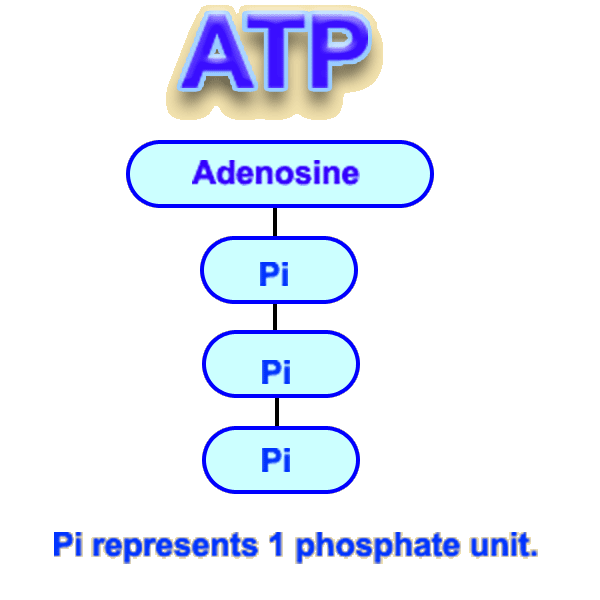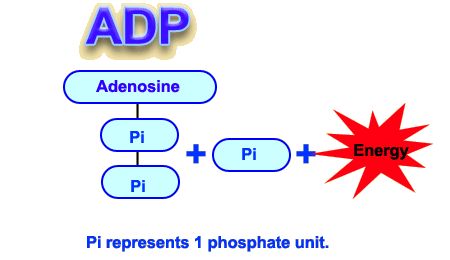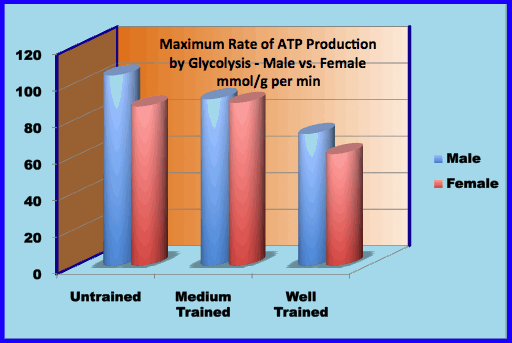Endurance Events and Lactate Testing
With Emphasis on the Triathlon
14 of 19
A Closer Look at
Anaerobic Energy Processes
An Alternative to Traditional Thinking
This module is a detailed exposition of an alternative to the classical theory on how muscles provide energy. It was developed by Alois Mader and has been used by Jan Olbrecht and others to assess the conditioning of an athlete when preparing for competition. Their ideas differ from the theories of energy metabolism found in most textbooks. However, the theory matches typical coaching experience better than traditional theories of energy metabolism. So it is gradually being accepted by a wider group of coaches and athletes. The following few paragraphs will represent a repeat of the Basic Energy section but then it will quickly head off in a different direction.
When the brain tells a muscle to contract, such as in swimming, cycling and running, it conveys a signal to the muscle via the nerves. This activates a group of muscle fibers to begin contracting. The process for this is complex, but a single compound called ATP provides the energy for this contraction. The proper name for this compound is adenosine triphosphate. The A stands for adenosine, the P stands for a phosphate molecule and the T means there are three phosphates attached to the ATP molecule.

Each contraction requires that millions of ATP molecules be broken down into a new ADP molecule and a free phosphate molecule. When this phosphate is broken off, energy is released and a contraction can take place. This has to happen millions of times for each contraction. The proper name for this new compound is adenosine diphosphate (ADP) since it has only two phosphates attached. Since there is only enough ATP in the muscles for about 2-3 seconds of all-out contraction, each muscle fiber needs to replenish the ATP in order to continue exercising. The ADP must be turned back into ATP or else the muscles will not be able to contract .

Actually ADP can break down into AMP which has a single phosphate molecule to provide energy for contraction but only a small percentage of ADP will do this. AMP is adenosine and one phosphate molecule.
How the muscle decides to replenish the ATP is one of the key concepts discussed in this module. Essentially the muscle must burn fuel to create new energy to bind the phosphate back to the ADP molecule and create a new ATP molecule. That is what most training is about, speeding up the rebuilding of the ADP molecule into ATP.
This happens in a fraction of a second. There are 5 different fuel systems to replenish the ATP (three aerobic systems and two anaerobic systems.) One of the five is not very important: the use of protein as fuel for the aerobic energy system. This will not be discussed because it represents such a small percentage of total ATP replacement. A second method of replacing ATP is only good for a few seconds and has little relevance for endurance athletes. This is the replacement of ATP by using creatine phosphate to replenish the phosphate used in the breakdown of ATP.
An aside: The breakdown of creatine phosphate plays a key role in muscular metabolism at exhaustion but this aspect of the Creatine Phosphate system will not be covered on this web site.
The other three methods of ATP replacement are responsible for over 98 % of ATP replacement during training and competition. These are
• Aerobic metabolism using fats as the fuel or substrate
• Aerobic metabolism using carbohydrates as the fuel or substrate
• Anaerobic metabolism using glucose as the fuel or substrate
Glucose is a carbohydrate. Essentially all carbohydrates one eats (sugar, pasta, potatoes etc) are turned into glucose if they are to be used for energy production. So while carbohydrates exist in many forms in our world, for human energy production, glucose is the main carbohydrate in the body. When glucose is broken down, it becomes pyruvate, which then turns quickly into lactate (both of which are also considered carbohydrates). Lactate also exists in the bloodstream and muscles and nearly every cell.
Most lactate eventually will turn back into pyruvate to be used as fuel for the aerobic system or turned back into glucose. So when we talk of carbohydrates as fuel for the aerobic system we are referring to pyruvate and lactate. Fats are complex for the body to break down, so the process is slow. Therefore, at high intensities, fat is not a factor.
Glucose is the fuel for anaerobic glycolysis. (See module on producing energy). Generally, when an athlete hears the terms aerobic and anaerobic metabolism, the two aerobic and one anaerobic processes mentioned above are being referred to.
An aside: carbohydrate essentially means carbon plus water or a compound of carbon, hydrogen and oxygen. The hydrogen and oxygen often exist in carbohydrates in the same ratio as these two elements do in water. Water is H2O or two Hydrogen ions for each Oxygen and in glucose the formula is C6H12O6
Here is where things start to change from conventional wisdom. How does the muscle decide which fuel process to use if it has three choices? Actually the choice of process is made by the chemical properties of various substrates and the amount of each available, the amount of appropriate enzymes available, and energy gradients between the various substrates. When ATP is broken down as energy to fuel contraction the chemistry of the muscle changes, slightly at first, but sometimes dramatically as intensity gets high. Also each muscle fiber may have a very different chemical structure from its neighbor. This different structure creates a different chemical environment and will affect how ATP is regenerated in that muscle fiber versus its neighbor. Part of training is attempting to change that chemical environment, to affect how the muscles start to prefer one of the three energy building processes over the other.
Alois Mader has developed a model of energy metabolism. The model is very complicated but the implications of this model for ATP replenishment and for training athletes are easier to understand. For those interested in the theory behind this model consult Mader(1986), Mader (1991), Mader (2003) and Hartmann and Mader (1996) for discussions in English. For a list of these references and further information in German, see the short list of references at the end of the module on controlling the gatekeeper.
Before we describe the model, let us illustrate how this relates to different types of athletes with an example of three runners. This too is a reprise of information discussed previously in the module on what is faster.
Example – Running: The first runner is an elite sprinter whose optimal events are 100 m and 200 m. The second runner is an elite middle distance runner whose optimal events are the 1500 m and 3000 m races. The third runner is an elite marathoner. Each will compete in three events, the 200 m, 1500 m, and 10,000 m races to see who is the fastest. The following chart illustrates how well each athlete can be expected to do in each race.

If you ask who is the fastest, then the answer is that it depends on how long the race is. What makes one athlete faster at 200 m but slowest at 1,500 m and 10,000 m and another athlete fastest at 10,000 m but slowest at 200 m? Mader had an insight that makes sense to most coaches and is supported by the test results. He said that the difference was not the athlete's ability to process aerobic energy because all elite athletes have high aerobic capacity. Mader's model said the deciding difference between the three athletes was the strength of their anaerobic systems. While the elite sprinter's aerobic capacity will usually not be as high as the middle distance runner or the marathoner, it will still be pretty high. But the anaerobic capacity will be dramatically different for the three athletes and this is what primarily determines which events the athlete will excel at. Mader's model indicates that the sprinter is fastest at 200 m because he has a very high anaerobic capacity, while the marathoner is fastest at 10,000 m because he has fairly low anaerobic capacity.
This model is the basis for how Jan Olbrecht evaluates his athletes and he uses a variation of Mader's model in a simulation program which can estimate both the aerobic and anaerobic capacity of athletes for swimming, running and rowing through lactate tests. Similar models have been developed for other sports such as cycling.
The Secrets of Lactate - That endurance athletes had lower anaerobic capacity was known to researchers before Mader but it was Mader who connected this lower capacity with the enhanced ability to excel at endurance races because it was the reason that the endurance athlete could use more of his or her aerobic capacity. Every other researcher since has missed this, and it has been staring them in the face for over 20 years.
Thus the well-trained endurance athlete can use a higher percentage of VO2 max because of this lower capacity. Here is a chart from a 1983 textbook by Newsholme and Leech that measured the anaerobic capacity of different types of athletes for running. This shows that well-trained athletes have a lower anaerobic capacity. The untrained person is actually faster over a short distance but over long distances this lower capacity opens the gateway to higher performances.

Source: Biochemistry for Medical Sciences, Newsholme, E., Leech, A.,
John Wiley 1983
Mader discovered the connection but Jan Olbrecht is one who realized the implications for training. There are definitely limits to how much anaerobic capacity can be changed, and the capacity does not vary as much as aerobic capacity. Like aerobic capacity a lot of it is probably genetically determined. But anaerobic capacity can be trained down and back up again when necessary.
Olbrecht also saw the implications for adjusting the anaerobic capacity for the event and fine-tuning one capacity vs. the other to get a peak performance. And the way to measure both these capacities was through lactate testing. The Secrets of Lactate is all about knowing the implications of how the anaerobic capacity interacts with the aerobic system for an optimal performance. Ignore anaerobic capacity if you want but it is the gatekeeper to using aerobic capacity and successful performance at endurance events.
Continue to module 15 where we discuss how anaerobic metabolism is the gatekeeper for aerobic energy
Module 15 of 19- anaerobic metabolism is the gatekeeper for aerobic energy
